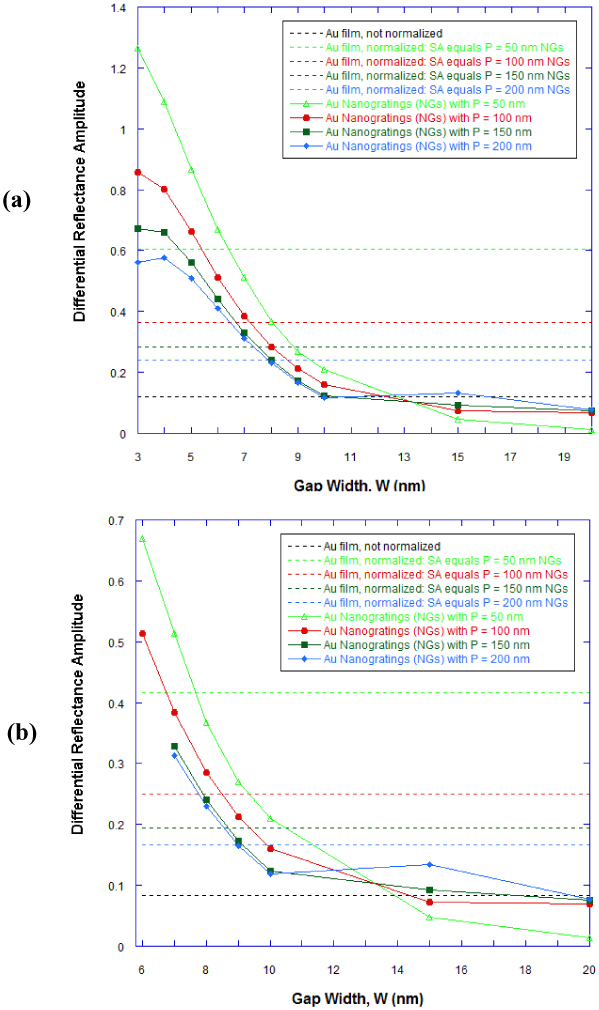Fig. 12.

RCWA calculations showing the effect of groove width ‘W’ on the amplitude of the differential reflectance (peak maxima – peak minima) signals obtained from gold nano-gratings, when the plasmon resonance related dips in the reflectance spectra (before and after the localized refractive index change) - as well as the maxima and the minima in the differential reflectance curves - are considered (a) for wavelengths less than 1600 nm and (b) for wavelengths less than 800 nm. The gold nano-grating had a 100 nm periodicity and the effect of nano-grating groove width ‘W’ on the differential reflectance amplitude is plotted for different values of periodicity ‘P’: 50 nm (continuous light green line), 100 nm (continuous red line), 150 nm (continuous dark green line), and 200 nm (continuous blue line). The differential reflectance curves were obtained for a change of the localized refractive index - 1 nm above the metallic film surface of a narrow groove gold nano-grating - from n = 1.33 to n = 1.53 upon binding of a 1nm thick target having a refractive index of 1.53 on the surface of the metallic film. The dashed black line provides the baseline value of the amplitude of differential reflectance for a planar gold film evaluated using the Kretschmann configuration and employing wavelength interrogation. The other dashed lines provide the baseline values of the amplitude of differential reflectance for a planar gold film - evaluated using Kretschmann configuration and employing wavelength interrogation - that are normalized such that the planar gold film would have equivalent surface area as would be present in gold nano-gratings of groove periodicity ‘P’ when the value of ‘P’ is 50 nm (dashed light green line), 100 nm (dashed red line), 150 nm (dashed dark green line), and 200 nm (dashed blue line).
